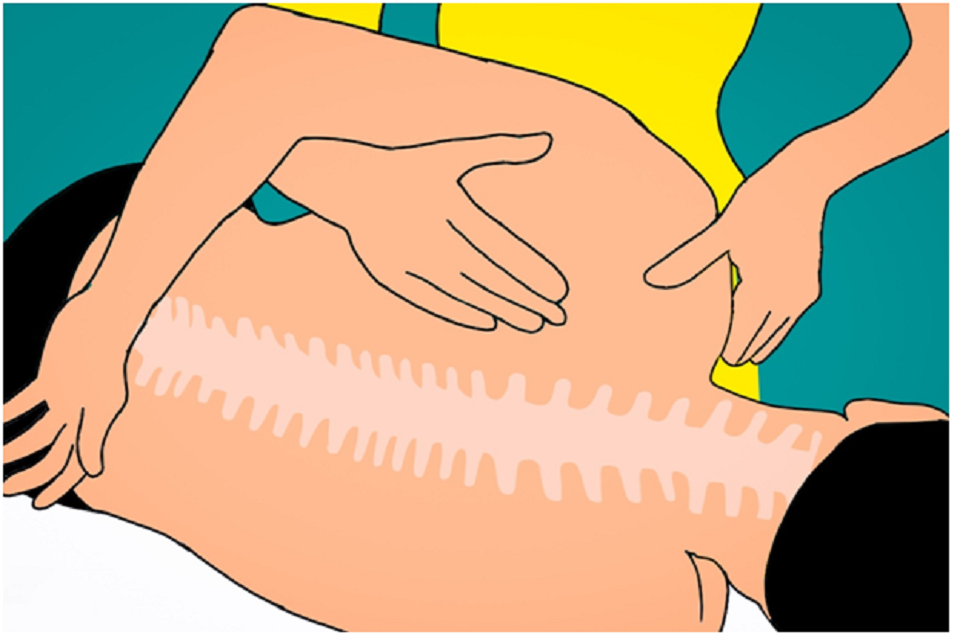texting tribulations what texting does to your spine?

Introduction
This blog will assess texting tribulations what texting does to your spine. In today’s digital age, most of us are glued to our phones and tablets for hours on end. While this technology has made communication and information-sharing more convenient than ever before, it also poses a significant risk to our spinal health. The constant use of mobile devices can lead to a condition known as “text neck,” which is characterized by pain and discomfort in the neck, shoulders, and upper back. This is caused by the repetitive motion of looking down at a phone or tablet screen for extended periods of time, which puts pressure on the muscles and ligaments in the neck and upper back. While text neck may seem like a minor inconvenience at first, it can lead to chronic pain and long-term spinal degeneration if left untreated. In this blog, we’ll explore the causes, symptoms, and prevention strategies for text neck, as well as the long-term effects it can have on our spinal health.
“text neck” – texting tribulations what texting does to your spine
Text neck is a term used to describe a condition caused by the repetitive strain on the neck and upper back muscles resulting from prolonged periods of looking down at a phone or tablet screen. texting tribulations what texting does to your spine lead to pain, discomfort, and stiffness in the neck, shoulders, and upper back. Over time, this can also lead to spinal degeneration and chronic pain.
The problem of text neck has become increasingly prevalent in recent years, as people of all ages spend more and more time on their mobile devices. The human head can weigh up to 10-12 pounds, and when the neck is bent forward, the weight on the spine increases significantly. In fact, at a 60-degree angle, the pressure on the spine can increase to as much as 60 pounds!
This constant pressure and strain on the neck and upper back muscles can cause inflammation, which can lead to pain and discomfort. Additionally, the repetitive motion of looking down at a phone or tablet screen can lead to muscle imbalances and poor posture, which can exacerbate the problem over time. Overall, it is important to be aware of the impact of prolonged phone use on our spinal health and take steps to prevent text neck before it becomes a chronic problem.
Symptoms of text neck:
Text neck can cause a variety of symptoms that can negatively impact your daily life and overall health. The most common symptom of text neck is neck pain, which can range from mild discomfort to severe pain. This painresuting from texting tribulations what texting does to your spine may also be accompanied by stiffness in the neck and upper back, making it difficult to move your head or shoulders.
In addition to neck pain and stiffness, text neck can also cause headaches and shoulder pain. These symptoms can make it difficult to concentrate or perform daily tasks, leading to decreased productivity and quality of life.
Over time, untreated text neck can lead to chronic pain and decreased range of motion in the neck and upper back. This can also cause muscle imbalances and poor posture, which can exacerbate the problem and lead to additional spinal health issues.
It is important to address the symptoms of text neck as soon as possible to prevent further damage and long-term health problems. By taking steps to improve posture and reduce the amount of time spent looking down at your phone or tablet, you can reduce your risk of developing text neck and improve your spinal health.
Prevalence of text neck:
Text neck has become increasingly prevalent in today’s society, especially among young people who use their phones and tablets for extended periods of time. According to a study published in the National Library of Medicine, up to 90% of adults in the United States experience symptoms of text neck at some point in their lives.
The prevalence of texting tribulations what texting does to your spineis particularly high among younger generations, who spend more time on their mobile devices than any other age group. A survey conducted by the Pew Research Center found that 95% of teenagers in the United States have access to a smartphone, and 45% report being online “almost constantly.” This constant use of technology has led to a significant increase in the incidence of text neck among young people.
The problem of text neck is not limited to the United States; it is a global issue affecting people of all ages and backgrounds. As technology continues to play a larger role in our daily lives, it is important to be aware of the potential health risks associated with prolonged phone and tablet use. By taking steps to prevent text neck, we can reduce our risk of developing spinal health problems and maintain our overall health and well-being.
Prevention of text neck:
Preventing text neck requires a combination of lifestyle changes and ergonomic adjustments. One of the simplest ways to prevent text neck is to take breaks from technology throughout the day. This can involve setting a timer to remind yourself to take a break from your phone or tablet every 30 minutes, or taking a break from sitting at a desk for extended periods of time.
Practicing good posture is also important for preventing text neck. This means keeping your shoulders relaxed and your head in a neutral position, with your ears in line with your shoulders. This can be achieved by adjusting your desk or chair height, and ensuring that your computer or tablet is at eye level.
Exercises that strengthen the muscles in your neck and upper back can also help prevent text neck. These can include shoulder blade squeezes, chin tucks, and neck stretches. Additionally, regular physical activity such as walking or yoga can help improve overall posture and reduce the risk of spinal health problems.
Overall, preventing text neck requires a conscious effort to prioritize spinal health and make adjustments to daily habits and routines. By taking proactive steps to prevent texting tribulations what texting does to your spine, we can maintain our spinal health and improve our overall well-being.
Treatment for text neck
There are several treatment options available for text neck, depending on the severity of the symptoms and the underlying cause of the condition. One common treatment option is physical therapy, which can help alleviate pain and improve range of motion in the neck and upper back. This may involve exercises to strengthen the muscles in these areas, as well as manual therapy techniques such as massage or stretching.
Chiropractic care is another treatment option for text neck, which involves adjustments to the spine to relieve pressure and improve alignment. This can help reduce pain and improve overall spinal health.
Over-the-counter pain medications such as ibuprofen or acetaminophen may also be used to manage symptoms of text neck, particularly in cases of mild to moderate pain.
In more severe cases, a combination of treatments may be necessary to alleviate symptoms and improve spinal health. It is important to consult with a healthcare professional to determine the best course of treatment for your specific needs and circumstances.
Long-term effects of text neck
If the texting tribulations what texting does to your spine remain untreated, text neck can have long-term effects on spinal health, leading to chronic pain, arthritis, and spinal degeneration. Chronic pain in the neck and upper back can result from the strain placed on these muscles and joints due to prolonged periods of looking down at a phone or tablet.
Over time, this strain can lead to spinal degeneration, which occurs when the discs between the vertebrae of the spine wear down and lose their cushioning ability. This can cause pain, stiffness, and reduced mobility in the neck and upper back, as well as nerve compression and other spinal health problems.
Additionally, the repetitive stress placed on the neck and upper back can increase the risk of developing arthritis in these areas, particularly among older individuals. Arthritis can cause pain, swelling, and stiffness in the affected joints, and can worsen over time if left untreated.
It is important to be aware of the potential long-term effects of text neck and to take steps to prevent and treat the condition to maintain spinal health and overall well-being.
Conclusion
In today’s world, where smartphones and other mobile devices have become a ubiquitous part of daily life, it is important to be aware of the potential health risks associated with prolonged technology use. Text neck is a condition that can impact spinal health and cause a range of symptoms, including neck pain, stiffness, headaches, and shoulder pain.
While text neck is becoming increasingly common, there are steps we can take to prevent and treat the condition. This includes taking breaks from technology, practicing good posture, and doing exercises to strengthen the muscles in the neck and upper back.
If left untreated, text neck can have long-term effects on spinal health, leading to chronic pain, arthritis, and spinal degeneration. It is important to be proactive in preventing and treating text neck to maintain spinal health and overall well-being.
By making simple changes to our daily habits and routines, we can reduce the risk of developing texting tribulations what texting does to your spine and other spinal health problems, and enjoy the many benefits of technology without compromising our health.


